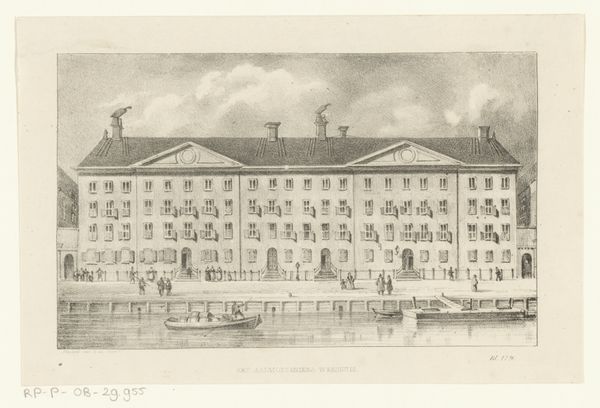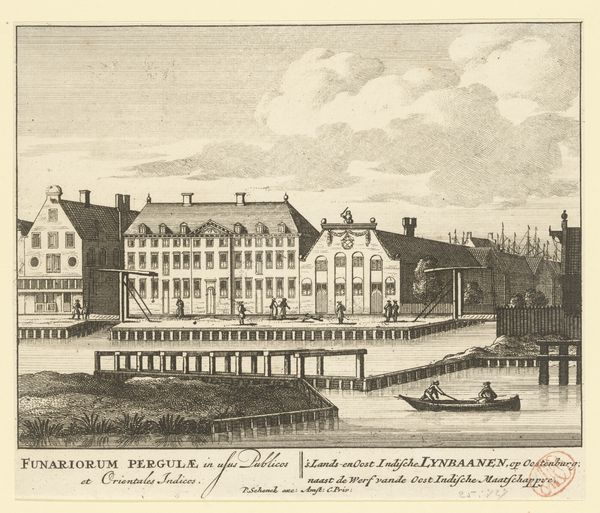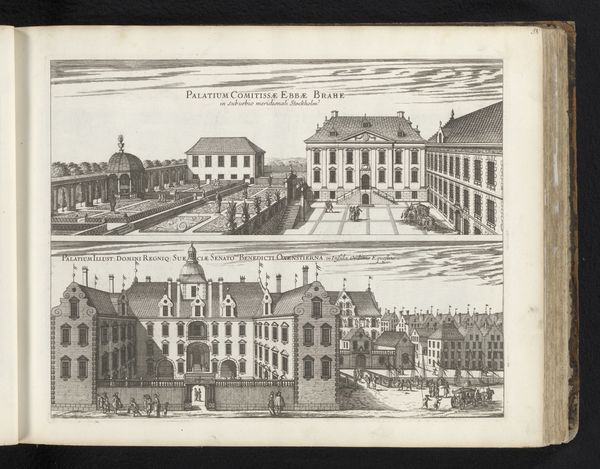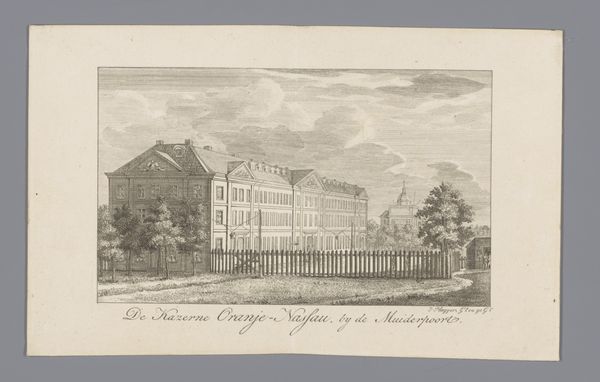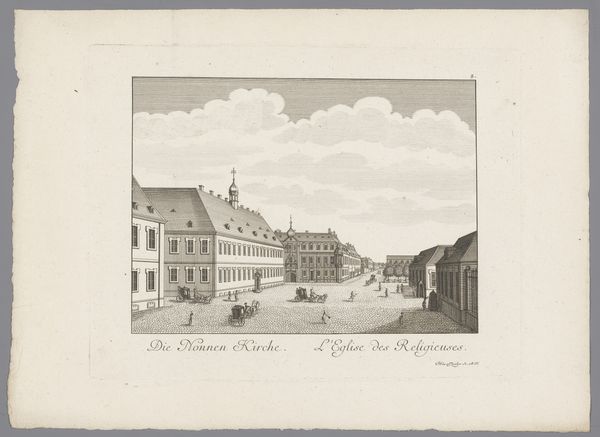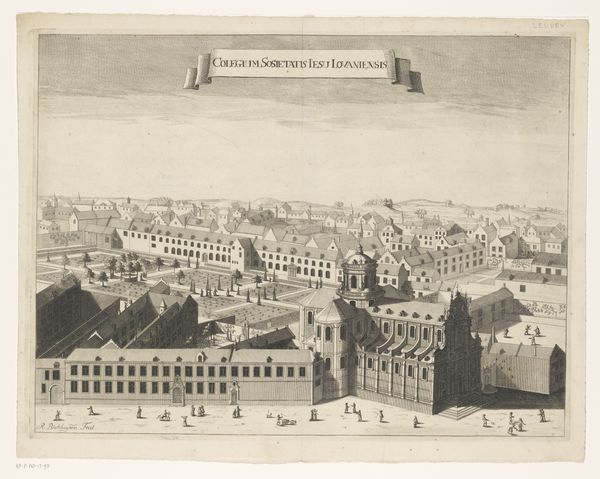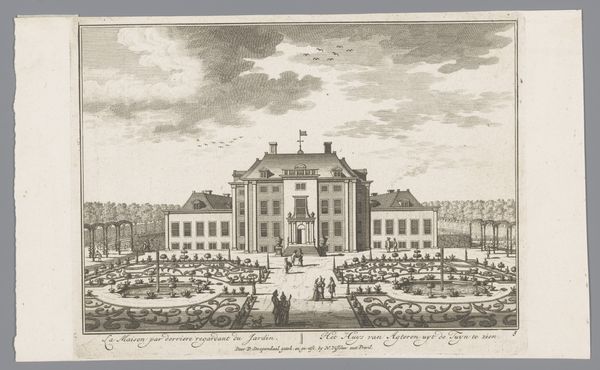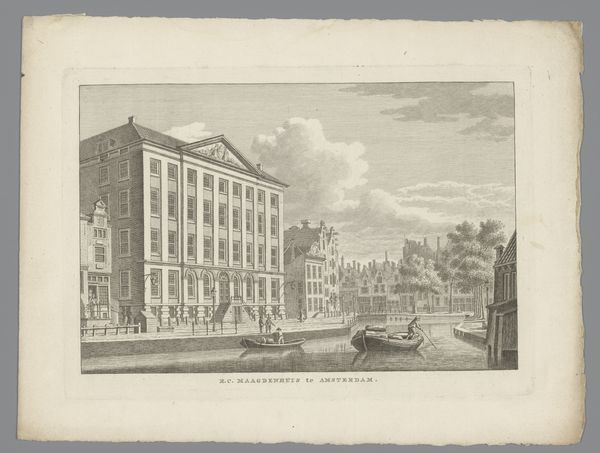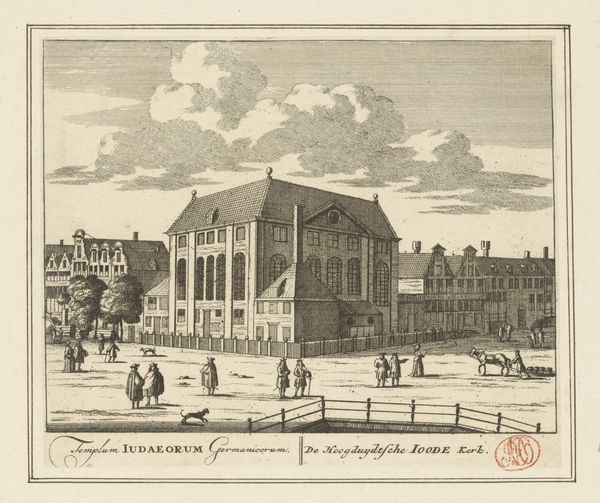
Dimensions: height 96 mm, width 129 mm
Copyright: Rijks Museum: Open Domain
Curator: This is Jan Fokke's "View of the Lutheran Diaconal House on the Nieuwe Keizersgracht in Amsterdam," an engraving from 1789. It’s an exquisite example of cityscape art. Editor: Immediately, the intricacy of the etching catches my eye. It's almost photographic in its detail, despite being a manually-reproduced print. You can almost feel the brick and stone. Curator: Yes, Fokke's ability to capture architectural detail using such a process is truly remarkable. One can only imagine the labour behind each line. Editor: Labor and production are central here. Considering the Diaconal House’s purpose – caring for the needy – there’s a stark contrast between the institution's mission and the intensive human work that created the very image documenting it. Did the patients ever glimpse these kinds of representations of their shelters? Curator: That's a potent question, isn't it? To me, it's always seemed about light. Notice how he plays with shadow and reflection on the water. It imbues what might otherwise be a clinical depiction of a building with such grace. The etching softens the rigidity of the architecture, just so. Editor: It's undeniable that the composition, for all its formality, has a calming effect. I’m drawn to the social history. Prints like these were not just art; they were commodities, distributed and consumed in a growing market for images, impacting how Amsterdam itself was seen. Curator: Precisely! The print becomes a symbol of Amsterdam's identity, its prosperity, and its commitment, however performative, to social welfare. Editor: Ultimately, viewing art through materiality is revealing. Every scratch on the plate speaks of skill, yes, but also a whole network of commerce. It allows one to trace a chain reaction across place, people, and meaning. Curator: It deepens our connection to the piece, no question. I find it particularly lovely how Fokke humanises it. A wisp of cloud. Reflections shimmering. It isn't just cold, unyielding stone, after all. Editor: Agreed. And it reminds us that while we look at a cityscape, humans are as essential a material in its creation as brick. Curator: Beautifully put. Food for thought, indeed!
Comments
No comments
Be the first to comment and join the conversation on the ultimate creative platform.
